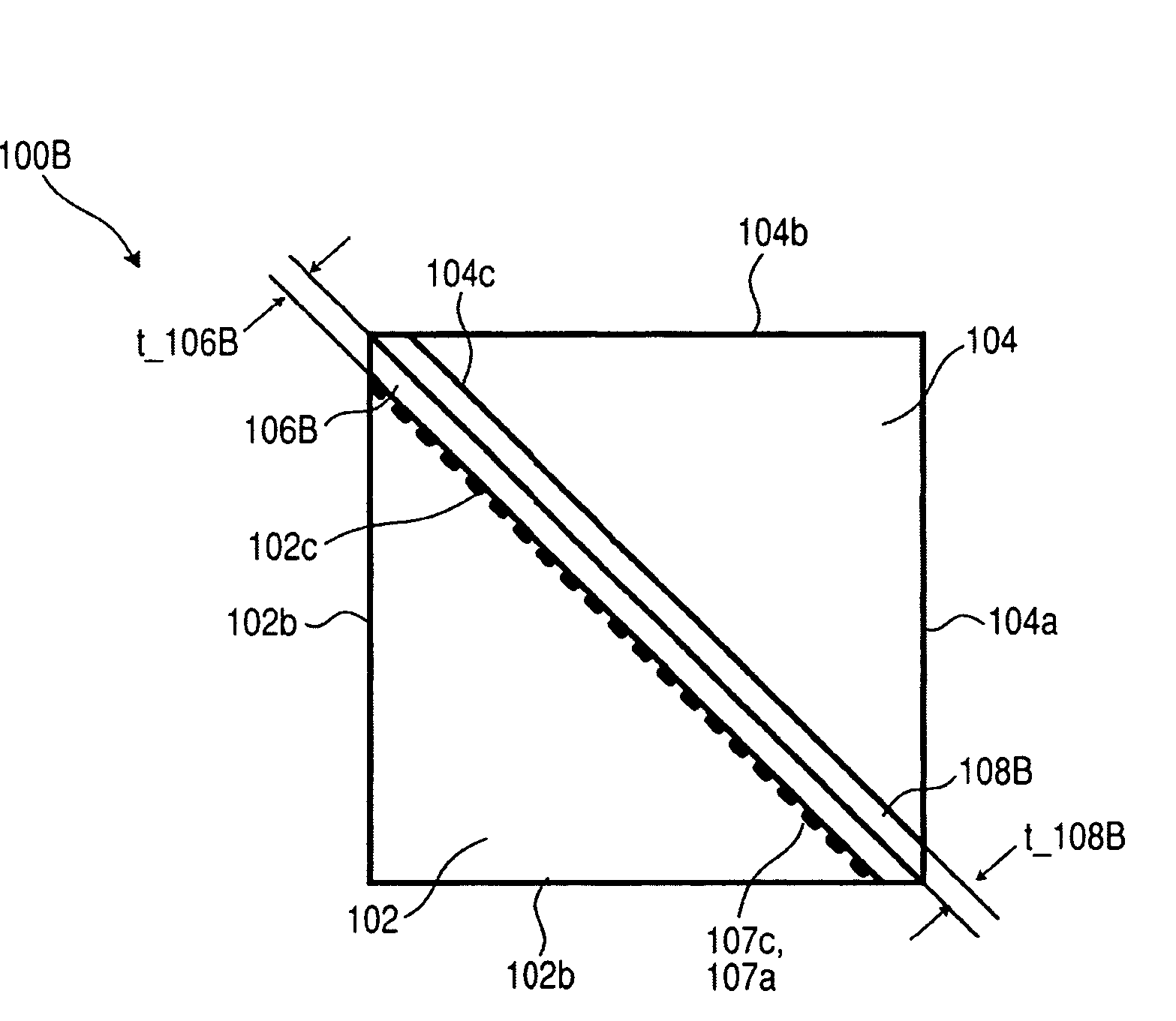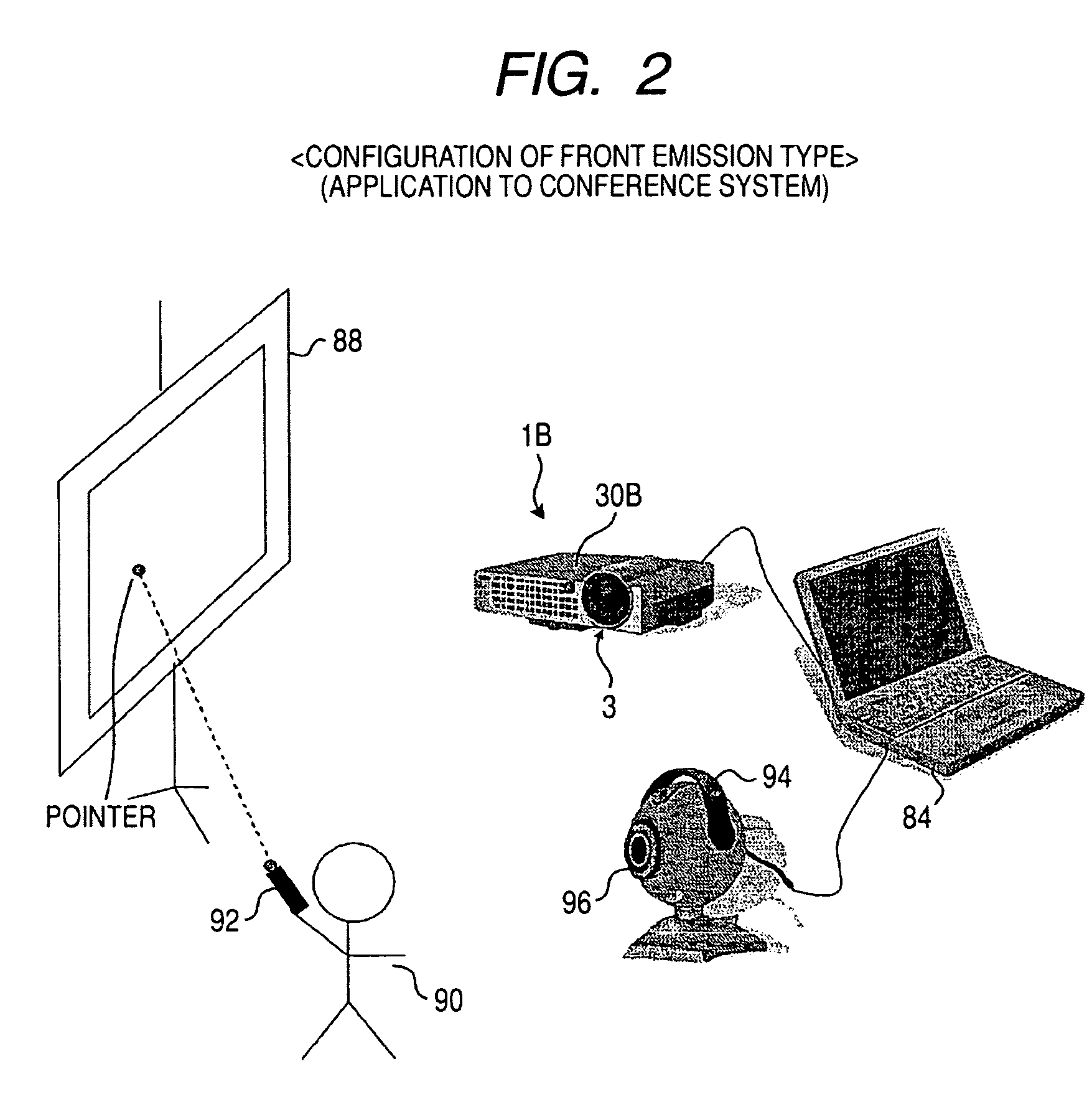Polarizing beam splitter, projection optical system, projection display
a technology of optical system and projection display, applied in the field of optical prisms, can solve the problems of deteriorating the resolution of projected image, etc., and achieve the effects of suppressing astigmatism, improving the focusing performance of projection optical device or projection display, and suppressing astigmatism
- Summary
- Abstract
- Description
- Claims
- Application Information
AI Technical Summary
Benefits of technology
Problems solved by technology
Method used
Image
Examples
first example
Projection Display (First Example)
[0076]FIGS. 1A and 1B are diagrams schematically illustrating a projection television as a first example of a rear projection display according to an embodiment of the invention, where FIG. 1A is a front view and FIG. 1B is a side view.
[0077]As shown in FIGS. 1A and 1B, the projection television 1A as the rear projection display includes a frame (a frame of a chassis) 30A and the frame 30A is provided with a projector unit 3 as an example of a projection optical device which is a basic optical system of a projection display, a reflecting mirror 40, and a transmission-type screen 50. A speaker 2 is disposed on both sides of the screen 50. In this example, the frame 30A and the screen 50 constitute the entire chassis. The rear projection display is constructed using the transmission-type screen 50.
[0078]The projector unit 3 serves to output an image-projecting light beam and enlarges and projects an optical image, which is spatially modulated by input...
second example
Projection Display (Second Example)
[0089]FIG. 2 is a diagram illustrating the entire configuration of a television conference system as an example of an information providing system employing a second example of the projection display. FIG. 2 shows a configuration of a presenter-side conference room in a usual television conference system. As a structure for displaying image information on a screen, the conference room includes a computer 84 storing a variety of projection image information as conference materials, a liquid crystal projector 1B as a projection device connected to the computer 84, a reflective screen 88 for displaying an image output from the liquid crystal projector 1B, and a laser pointer 92 for displaying a mark as a pointer indicated by the presenter 90 on the information displayed on the screen 88. A front projection display is constructed using the reflective screen 88.
[0090]Similarly to the projection television 1A, a projector unit 3 as an example of the proj...
first embodiment
Modified Example
[0129]FIG. 9 is a diagram illustrating a projector unit 3A_2 (projection optical system) having a modified configuration of the first embodiment using the polarizing beam splitter 100A according to the first embodiment. In this modified configuration, the P polarization component is input to the reflective liquid crystal panel 170 as shown in FIG. 29B. In the device configuration, the known polarizing beam splitter 942 in the configuration shown in FIG. 29B is replaced with the polarizing beam splitter 100A according to the first embodiment. Here, the detailed description thereof is omitted.
[0130]In this modified example, the panel-output beam (S polarization component) spatially modulated on the basis of the image information SV and output from the reflective liquid crystal panel 170 is an optical image corresponding to the image signal SV and is input again to the polarizing beam splitter 100A. At this time, the S polarization component of which the vibration direc...
PUM
 Login to View More
Login to View More Abstract
Description
Claims
Application Information
 Login to View More
Login to View More - R&D
- Intellectual Property
- Life Sciences
- Materials
- Tech Scout
- Unparalleled Data Quality
- Higher Quality Content
- 60% Fewer Hallucinations
Browse by: Latest US Patents, China's latest patents, Technical Efficacy Thesaurus, Application Domain, Technology Topic, Popular Technical Reports.
© 2025 PatSnap. All rights reserved.Legal|Privacy policy|Modern Slavery Act Transparency Statement|Sitemap|About US| Contact US: help@patsnap.com



